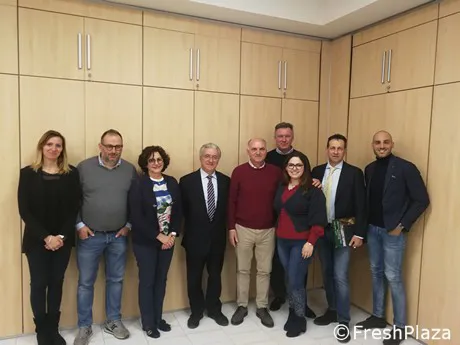This year, the Italian-Spanish-French strawberry contact group meeting was held at the "Coop Sole di Parete", in the province of Caserta, Campania. The event took place on Thursday 14 and Friday 15 March.
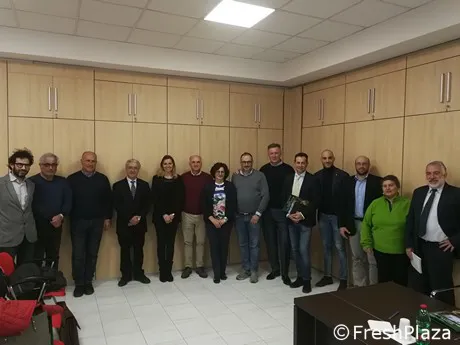
Friday's meeting commenced with greetings from the director of the cooperative, Pietro Ciardiello, new president of the "Strawola Product Committee", who stated: "We have been doing a great job over the past years and we always strive to do better; but we can only improve by offering tasty, sustainable,ethical and quality products".
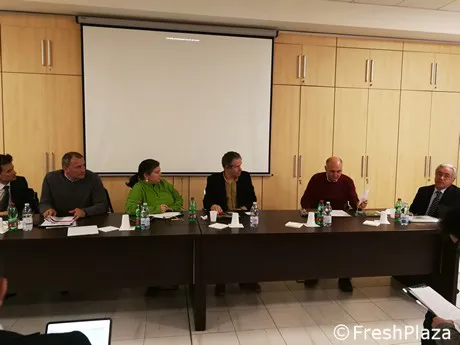
Following Pietro Ciardiello's greetings, the "Mipaaft" executive Roberto Cherubini intervened: "It is important to listen to the supply chain in a moment of reform of the CAP - Common Agricultural Policy. In the new role, the CAP confirms the CMO - Common Market Organisation system for fruit and vegetables; it allows us to grow. The new CAP has also added that it is compulsory to allocate 5% of the operational plan of each individual producer organization (PO) to the investment in experimentation and research. We are currently dealing with European partners to eliminate this obligation, which would in fact damage smaller companies. I believe it is fundamental to favor the aggregation between producers and the creation of POs."
A survey conducted by the CSO - Centro Servizi Ortofrutticoli ("Center for Fruit and Vegetable Services", translator's note) in Ferrara shows that investments in strawberries in Italy experienced a general growth over time. Estimates for 2019 indicate that an area of roughly 3,796 hectares will be dedicated to strawberry production, 1% more compared to the previous year.
Basilicata represents the leading region in Italy in strawberry production, with 24% of cultivated areas, followed by the region of Campania with 23%. In 2019, Basilicata has seen a significant increase compared to the previous year, where the total amount of cultivated area was 11%. Campania has experienced a very slight decrease of 1% compared to last year, while Sicily's production has dropped down of 5%.
Instead, the situation in Northern Italy is rather different: Veneto and Emilia Romagna have experienced a decline, while Piedmont recorded a slight increase of 1%.
In Basilicata, although there is a contraction in the percentage of total area destined to the production of the Sabrosa Candonga® variety (from 81 to 77%), this variety still distinguishes the region of Basilicata from the others.
In Campania (where the Sabrina variety is grown), a second variety is also gaining ground, namely the Melissa variety. The production of the latter is only a few percentage points away from that of the former. The production of the Sabrina variety dropped from 46% (between 2017 and 2018) to 36%, while the Melissa variety has experienced an increase from 21% to 31%.
The domestic consumption of strawberries is on the rise. This statement is supported by the market penetration index, which rose from 76% to 83% and showed that the strawberry market has never experienced a crisis.
Exports are lower compared to imports. While 10,450 tons were exported in 2018 (down 32% compared to 2017), 35,613 tons were imported in 2018 (up 10% compared to 2017). Italian strawberries are mainly exported to the following countries: Germany (40%), Austria (23%) and Switzerland (11%). As far as imports are concerned, Spain is leading the way and dominating the scenario of Italian purchases abroad, representing almost 80% of supplies.
The origins of the Italian import of strawberries. Values expressed in tons. Source: CSO elaborations on ISTAT data.
Ultimately, the Italian strawberry production and its market are growing thanks to the leading Southern regions and also thanks to the innovative varieties proposed.
Rafael Domínguez Guillén, general manager of Freshuelva, spoke in occasion of the contact group meeting, representing the Spanish delegation, after presenting the data of the previous 2017/2018 campaign. He declares that "As far as the strawberry campaign of 2018/2019 is concerned, the cultivated areas increased by 3.5%. This year, unfortunately, the weather conditions were not in our favour: the heavy rains which occurred in October and immediately after the transplants, caused us a loss of 90 hectares of strawberries."
In fact, the association of Spanish insurers operating in the agricultural sector (Agroseguros) quantified the losses caused by the storms in the affected area, for a total amount of approximately +300,000 euros. The most widespread cultivars in Huelva (which account for 65% of Spanish strawberry production) are "Fortuna", which this year has experienced an increase of 39% (+2% compared to the previous campaign), "Rociera", which accounts for 19.3% of Spanish production (+7% compared to the previous campaign) and last but not least the "Victoria club" variety, whose production is estimated to be 11.8%.
The director of Freshuelva said that in February a reduction in volume of 30% was recorded, but the prices are better than last year. The peak of production is expected to be reached at the end of March.
Furthermore, Xavier Mas, president of "Aop Nationale Fraise" and referent of the French delegation, explained the situation in his country: "Following a not very exciting 2017/2018 campaign, we hope that this season will be better."
As for the "Fraises de France" association, which brings together over 550 producers for a total volume of 22 thousand tons (42% of the entire French strawberry production), the most cultivated cultivars are the "Gariguette"variety (43% of the total production - the expected peak of the campaign of weeks 14/15 and 16) and other varieties of round strawberries which account for 24% of the production.
"We are currently looking for a new spring variety that satisfies us and is more pleasing to the consumer. Also, this year we are participating in two European communication programs, one for children (European Fraich'Fantasy) and the other for adults (Fruit and Vegetables from Europe). We want to create a program which is easily accessible to children and publish strawberry recipes via Youtube to obtain the visibility of the younger ones. As for the adults, we will create a short film that will be shared on Youtube and on Facebook. We are also thinking about creating a periodic dossier to communicate in an effective manner all the news about our varieties."
Pietro Ciardiello, after having carried out his report on the matter, explained that: "From the analysis of how the consumer interfaces with strawberries, it emerged that there is a necessity of increasingly adapting the offer to the demand to meet the needs and mitigate the doubts of the buyers. We are committed to guaranteeing ever higher quality standards, in the name of the products carrying the 'Made in Italy' brand and by virtue of varietal innovation."
"We are aiming at the deseasonalization of strawberries. Our Strawberry System, which extends itself from Northern to Southern Italy, thanks to the great pedoclimatic variety, is able to offer strawberries almost all year round."
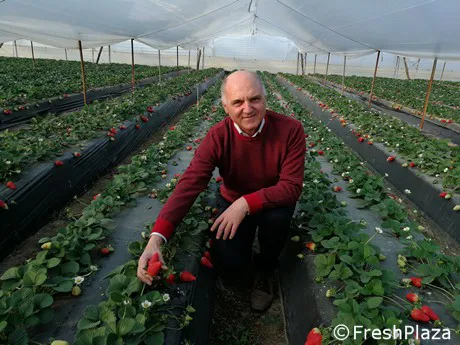
"In the name of the healthiness of the product, we hope that in the coming years the organic production will increase significantly. With respect to this, we are thinking of possibly adding grass to our greenhouses to improve the environmental conditions of our company. We want to invest in healthiness and on low-impact packaging."
"The time has come to launch brand policies that aim to promote a product that generates pleasure and well-being, that is ethical and sustainable for the entire community! We are also thinking of a television campaign for strawberries". Rafael Domínguez Guillén added a reflection on the third countries involved in strawberry cultivation, saying: "It seems, at present, that it is much better to come to Europe as an invited person than to be a European! We must create markets and economies and support them. The new non-European strawberry producers, on the other hand, enter Spain without paying duties, take possession of our markets, using phytosanitary products in productions which are banned in Europe."
"It is too easy to obtain the GlobalGAP certification, not to mention the ecological one! Surely the introduction of the offer coming from third countries into this sector is the result of globalization. I believe that our tasks, considering the good producers that we are, are to guarantee the development of our territory without abandoning it, creating jobs and taking care of the environment. We must increase and insist on our responsible attitude, and focus on three things: environmental sustainability, nutritional value and ethics."
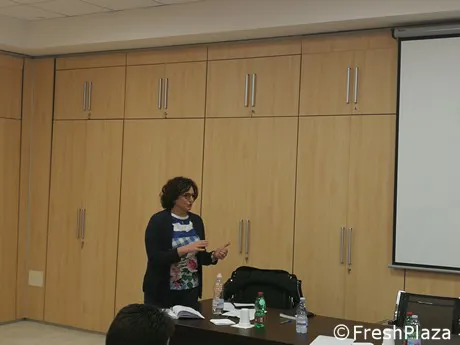
Carmela Suriano, CEO of the "Candonga Club" and representative of Italy Ortofrutta, closed the meeting with a reflection: "The consumer is not yet fully satisfied with the strawberry that is offered to him, due to the lack of flavor, consistency and healthiness. How can we solve it? We need to look for new cultivars that satisfy consumers, in order to adapt supply to demand, and to do this it is essential to invest in experimentation. In recent times, the strawberry is becoming a commodity and we must avoid this debasement. The consumer needs tools that can put him in a position to recognize a good product; awareness campaigns are needed. Furthermore, a traced product is a sign of an ethical, safe and made in Italy product. Ultimately: we defend our product, improve it qualitatively, promote environmental sustainability and claim its ethics! "
